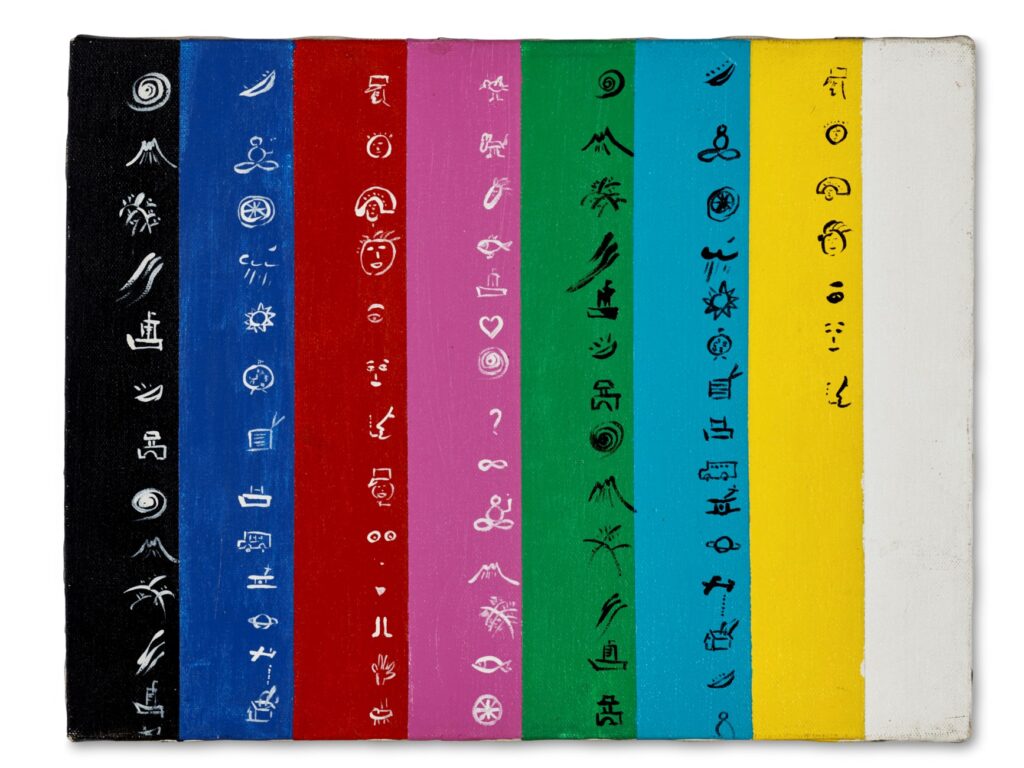
Now I am not saying it makes up the global cultural suffering caused by their other major contribution to the modern media landscape, Eurovision, but the European Broadcast Union deserves praise for promulgating one of the most sublime, iconic, and minimalist images ever: the EBU color bars used to calibrate the chrominance and luminance of PAL format video signals and receivers.
And how does TV artist Nam June Paik, who spent more time surrounded by these color bars, on more monitors, than any other artist of the last hundred years, honor it? By making a perfect, little painting. Which apparently looked too much like writing paper to not fill the columns with a repeating series of delicately painted pictograms.

Maybe the interest for Paik was mediating our global shift from written to visual language, because he called the work Rosetta Stone. [Smaller Rosetta Stone (Ch. 12), actually, which implies the existence of a larger Rosetta Stone, or Rosetta Stones for the 11 other channels on the dial, or both.]
By the time he published Rosetta Stone prints a year later, in 1984, Paik flipped the color bars to the correct orientation, and framed the image in the convex rectangle of a CRT screen. And he made the translation reference more explicit by pairing his pictograms with their often-representational Chinese character counterparts. I just noticed that fifteen years later, in 1998, though it did use the specific logo (〒) of Japan Post, NTT designer Shigetaka Kurita’s first set of emoji included no kanji elements, only Roman letters.]
Anyway, the painting belonged to Paik’s dealer Holly Solomon, and now her art advisor son Thomas is selling it. Unsurprisingly, it’s already past the estimate with a week to go.
28 Feb 2025, Lot 30: Nam June Paik, Untitled (Smaller Rosetta Stone Channel 12), 1983 [update: sold for $23,940, and honestly, if you asked if I’d rather have $23,940 or this painting? I think I’d say the painting.] [christies]
Previous, very much related: General Idea, Test Patterns, Trinitron
